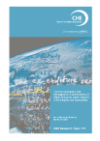Setting research priorities in Global Health: Appraising the value of evidence generation activities to support decision-making in health care
Posted on 21 June 2018

The allocation of scarce resources among competing health care priorities is a key objective in all jurisdictions, whether in low- and middle-income countries (LMICs) or high-income countries. This involves allocating resources to ensure access to health care programmes, which can deliver improvements in health, but also to managing innovation in the development of new technologies, and investing in evidence generation activities to improve health for future generations. The allocation of health care resources among competing priorities requires an assessment of the expected health effects and costs of investing resources in the different activities and the opportunity costs of these expenditures, as well as an assessment of the uncertainty in health effects and costs. Uncertainty can lead to unintended adverse health consequences, e.g., when expected benefits of an activity are not realised when implemented in practice, or resources committed by an activity are transferred away from other health improving activities.
The consequences of uncertainty can be reduced by investing in evidence generation activities that improve the information available to support future resource allocation decisions. An analytic framework is developed to assess the value of evidence generation activities to support international research funders, who have the responsibility for allocating funds among competing research priorities in Global Health. Within the framework, the costs and health benefits of evidence generation activities are assessed using the same principles as those employed when evaluating the cost-effectiveness of investments in service provision. Metrics of value, founded on an understanding of the health opportunity costs imposed by research expenditure, are used to quantify the scale of the potential global net health impact across all beneficiary populations (in net disability-adjusted life years averted), or the equivalent health care system resources required to deliver this net health impact, and research costs and their potential health opportunity costs.
The framework can be applied to answer key questions such as: whether investment in research activities is worthwhile; which research activities should be prioritised; what type of research activity is necessary and what is the most appropriate design of the research; what are the opportunity costs associated with evidence generation; what is the optimal timing of research; and whether evidence generation activities should be prioritised over investments in service provision or new technology development. An illustrative example is used to demonstrate the application of the framework for informing research priorities in Global Health.
Full Report: CHE Research Paper 155 (PDF ![]() , 2,544kb)
, 2,544kb)
Other papers in the CHE Research paper series can be found at: CHE Research Papers

